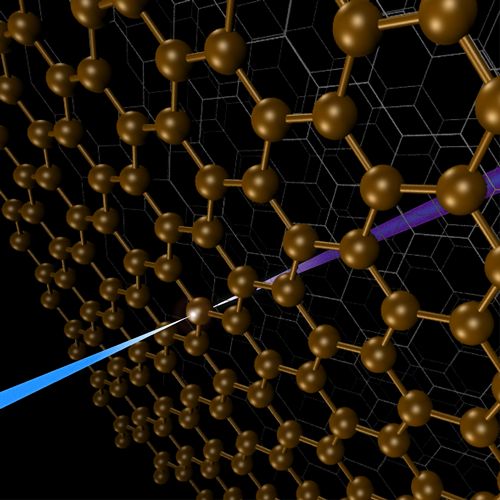Interfaces between layers of materials are essential in many technologies such as solar cells.
Interfaces between layers of materials are essential in many technologies such as solar cells. But when hitting a material with an x-ray beam, it's not easy to sort out what portion of the resulting spectrum comes from an interface, and what comes from the interiors of the materials. A new technique from UC Berkeley, Berkeley Lab, and other institutions, makes use of a process where two photons are absorbed by surface or interface atoms but not by interior atoms, so that signals from interfaces can be isolated, explains physicist Anders Nilsson of Stockholms universitet.
A new technique has been developed to probe interfaces, such as the graphene layers within graphite (shown here). When soft-x-ray pulses from a free electron laser enter the material, they excite inner-orbital electrons in the carbon atoms. For carbon atoms making up a graphite interface, these excitations can produce a photon with twice the energy of the incoming photons. Observations of this second harmonic generation could be used to study chemical reactions occurring on interfaces.


Leave a comment